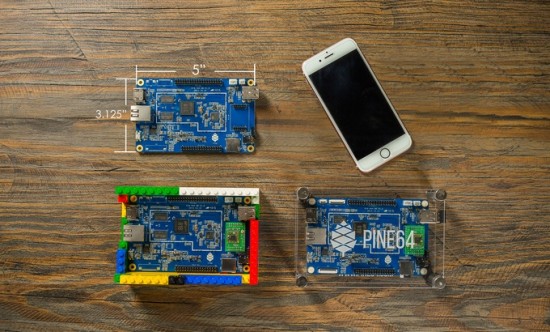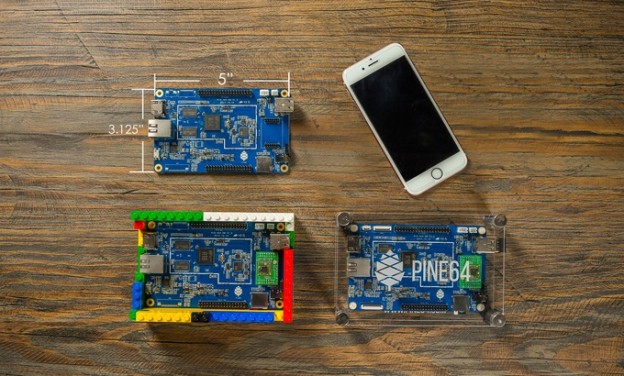
Not entirely small enough for comfortable pocket use, but, definitely packing a punch, allow me to introduce you to the PINE A64.
The PINE A64 is an extremely affordable 64bit expandable SBC (single board computer). Whether you are an IT professional, electronics hobbyist, student, teacher, hacker, inventor, or just someone who wants to have more flexibility to increase their productivity at work, the PINE A64 is a computer board made for everyone.
Punch packing a quad-core ARM A53 CPU 64-bit processor running at 1.2GHz. The GPU is a dual-core MALI-400 MP2 running at 500MHz. Although this is running at 1.1 Gpixels/s it is slightly higher than the original x-box’s performance levels.
As shown in the picture at the top of this page, there are many different hardware interfaces you can connect to your PINEA64 should you wish to. Depending on whether you choose the PINE A64 or the PINE A64+, the A64 ships default with two USB ports, HDMI out, 3.5mm Audio/Mic, Ethernet port, and 2 I/O expansion buses. On the more advanced A64+, you will receive it with three additional ports to add additional accessories such as: camera, touch panel and LCD panel port.
Being an open source platform, you can load anything you want on the PINE A64 but the company suggests to pair PINE A64 with Ubuntu, Android or openHAB IoT.
By aligning the PINE A64 to be compatible with these operating systems, you basically get access to over 1.7 Million apps on the market today, from utilities, games, and media apps.
Lastly, I must mention the power usage involved with this device. If you acknowledge that a standard typical desktop pc or server can operate between 75 to 300 Watts. The PINE A64 runs at a mere 2.5 to 3.5 Watts! Couple this info up with the fact that it can be powered via USB on the 5V power line or a 3.7V battery through on-board power management.
So, if you want one of these great little devices it will not break the bank. At only $15 on Kickstarter.com it’s a bargain.
